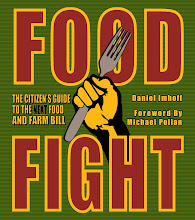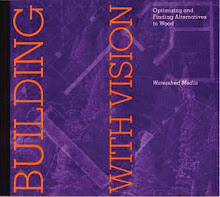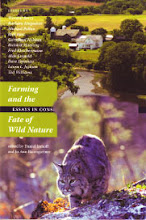Copious column inches have been devoted recently to secrecy laws that are being proposed and voted upon in state legislatures to protect Confined Animal Feeding Operations (CAFOs) from unflattering media attention. “Whistle blower” laws in Iowa, Minnesota, and Florida would make it a felony offense to gain employment for the purpose of producing videos documenting the realities of food animal production. The New York Times editorial board had this to say in late April:
“Exposing the workings of the livestock industry has been an undercover activity since Upton Sinclair’s day. Nearly every major improvement in the welfare of agricultural animals, as well as some notable improvements in food safety, has come about because someone exposed the conditions in which they live and die.”
Just this winter nutcases in Montana introduced a law that would allow representatives to carry concealed weapons in state capitol buildings. Do we find it surprising that states would also want to protect the sociopathic behavior behind closed doors of animal factories?
The CAFO industry and its evil twin, big agriculture, have been mucking with free speech, freedom of information, and basic democratic rights for over a decade. Oprah Winfrey was dragged through a prolonged and expensive lawsuit in the late 1990s for saying she had changed her mind about eating hamburgers after learning about industry feeding practices.
When sifting through 6,000 images for possible publication in CAFO: The Tragedy of Industrial Animal Factories, we learned that Montana, North Dakota, and Kansas had already passed laws making it illegal to photograph a food animal production operation without consent of the owner. Thirteen states had passed “veggie libel laws” making it a criminal offense to critique a food production operation. Needless to say, the 450 photographs and 30 essays that made the final cut were carefully vetted.
Many reactions to the images that finally appeared in CAFO follow similar lines: “it’s so heavy,” “I can’t get past the beginning,” of “I’d just rather not know.” A classroom of Bradford University political science students described the photographic content as “very intense.” Please consider this. Of the sixty-plus photographers that contributed images to the book, the largest by number came from photo agencies: the Associated Press, Corbis, Reuters, Alamy, and others. These photographers had permission to enter slaughterhouses, feedlots, and hog factories. Do you think they were shown the most down and dirty or the best of the best?
Facing the importation of the U.S. mega-dairy model into the United Kingdom, the World Society for the Protection of Animals (WSPA) sent a video team to America’s largest milk producing state, California, to see what they might be up against. The WSPA researchers were appalled at how easy it was to document blatant and abysmal animal welfare conditions. Should they be classified as “agro-terrorists” as the new anti-whistle blower laws proposed by industry suggests? Or should they be thanked for showing us a situation so desperately in need of improvement? After a prolonged campaign, the UK mega dairy withdrew its pollution permit—at least for the time being.
Meanwhile, in January of 2011, the Idaho legislature voted 61-7 to keep the public from knowing how dairy waste is handled. One wonders how legislators—charged with protecting the public good—can possibly pass a measure that prohibits its voters from being informed about something as potentially toxic as fecal floods of CAFO manure that can penetrate their drinking wells and groundwater.
These are Orwellian times. Many local governments have lost the ability to decide on whether or not to allow a CAFO in their communities. Those decisions are now made instead by state departments of agriculture, which are largely ruled by industry. Legislators turn their backs on freedom of speech and freedom of information to protect shit spewing polluters.
Citizens can’t afford to look away from the realities of basic economic production systems, whether we are talking about food, energy, shelter or anything else. What you don’t know can at least make you an accomplice in something you might not agree with, such as the abuse of other living creatures or ecosystems for the sake of a cheap meal. More than that, the democratic rights that we hold dear are ultimately at stake.
Is protecting the Fast Food Nation worth that price?
See also:
"Collaborative Approach Sets UK Apart on Animal Welfare"









